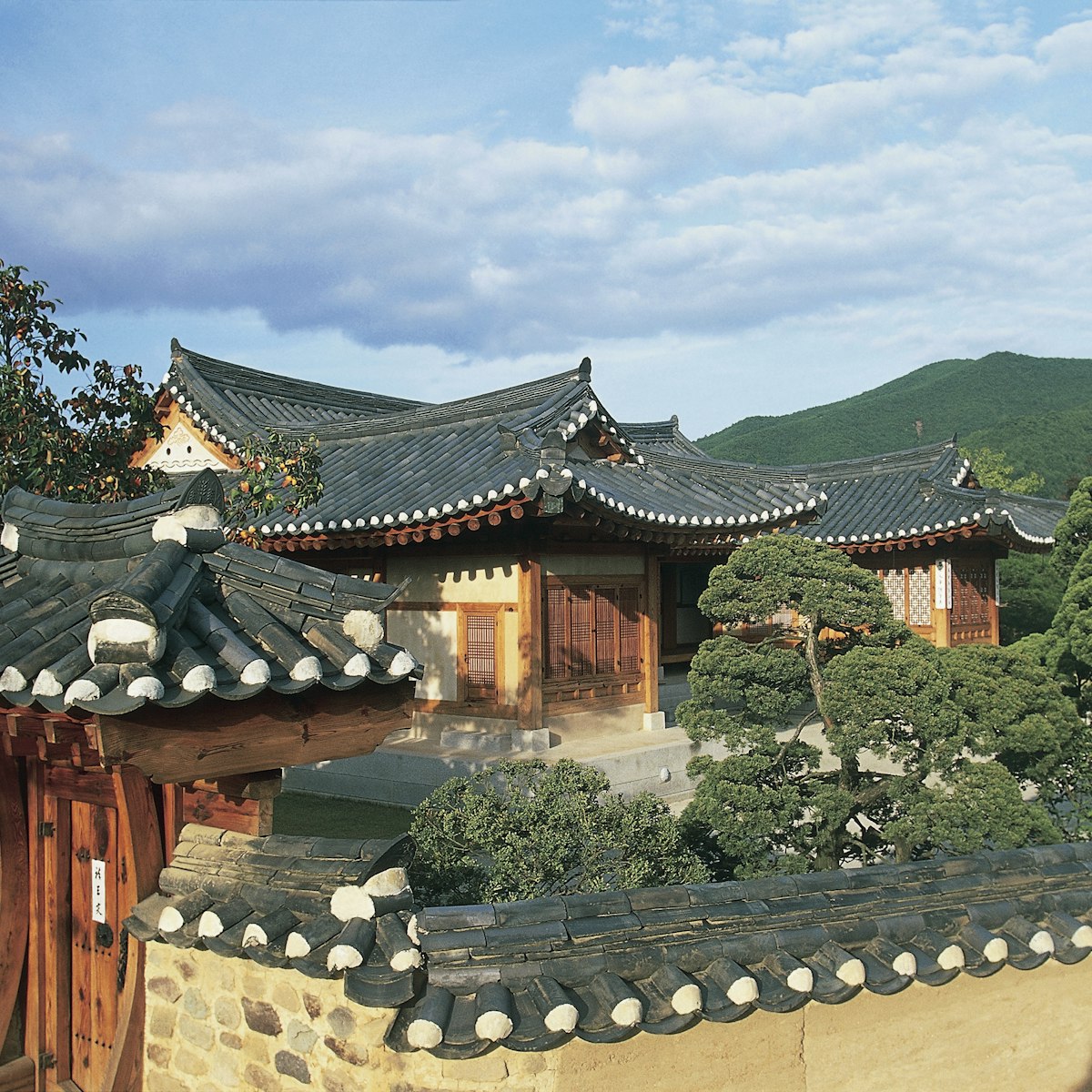
Gyeongsangbuk-do
This delightful traditional riverside village – a Unesco World Heritage site – is a place to commune with the traditional fabric of old Korea and, in the…

© Insung Jeong/Getty Images
Korea’s cultural warehouse, Gyeongsangbuk-do (경상북도) is a region resplendent in both natural beauty and heritage sites, including enchanting temples, ancient pagodas, rock-carved Buddhas and sublime tombs. Gyeongju is often called ‘the museum without walls’ for its historical treasures, many of which are outdoors. The rounded tumuli (burial mounds) hillocks in the centre of town are beautiful and serene pyramids – stately reminders of the dead they still honour.

Gyeongsangbuk-do
This delightful traditional riverside village – a Unesco World Heritage site – is a place to commune with the traditional fabric of old Korea and, in the…

Gyeongju
The huge, walled park has 23 tombs of Silla monarchs and family members. From the outside, they resemble substantial grassy hillocks that echo the…

Gyeongju
Near the main shopping area is the Noseo-dong district, where you'll find Silla tombs. Seobongchong and Geumgwanchong are adjacent tombs built between the…

Daegu
An icon and motif of Daegu, this lovely cruciform church is quite a sight, with its twin spires. Originally constructed in wood, the first incarnation…

Daegu
This red brick structure is one of the city's historic churches. Within the church is a fascinating history of the building and a collection of Bibles and…

Daegu
This excellent museum has English labelling throughout most of its collection – and what a collection. Armour, jewellery, Buddhist relics from various…

Gyeongju
Sprouting huge trees of vast girth, this is the largest extant Silla tomb – 22m high, with a 250m circumference. It's quite a picture at any time put…

Gyeongju
On a series of stone terraces about 16km southeast of Gyeongju, set among gnarled pines and iris gardens, this historic temple is the crowning glory of…

Filter by interest:

History
Slow down, take it easy – exploring a simpler way of life in the historic villages of Korea’s Gyeongbuk regionNov 2, 2020 • 8 min read
